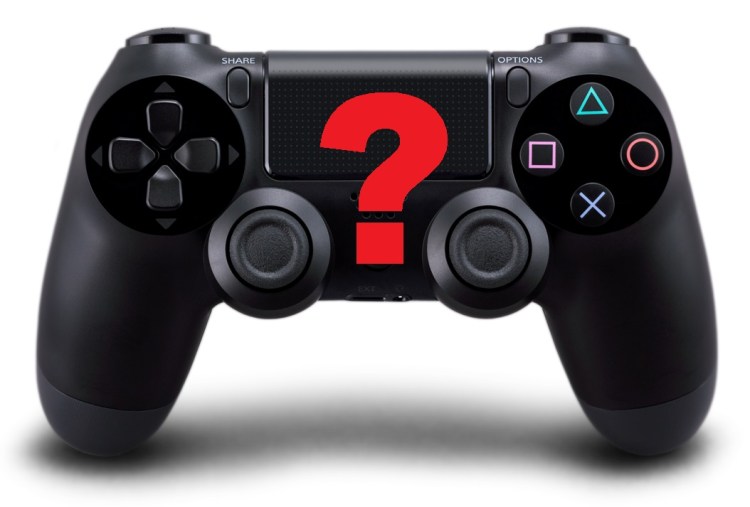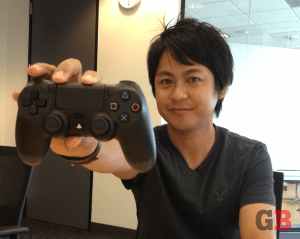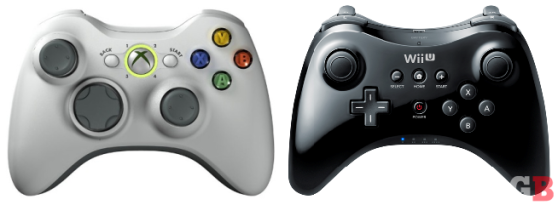This is part of our ongoing series about games and trends of the upcoming next generation. For the Xbox One version of this article, go here.
The PlayStation 4 controller:
- Part 1: The weird stuff that could’ve been
- Part 2: What’s new with the analog sticks and D-pad
- Part 3: What’s new with the buttons and triggers
- Part 4: A close look at the touchpad, light bar, and everything else
The PlayStation 4 was controller was almost … weird — something perhaps better suited as science-fiction movie prop than for playing God of War. No buttons? Strange round shapes? The engineers and hardware designers at Sony really tried rethinking the design of the upcoming console’s primary input device — no bad ideas in a brainstorm and all that.
In the end, familiarity and functionality prevailed, and the DualShock 4 controller [pictured above] will end up looking like its predecessors from previous PlayStations. Without having tried the early, “out there” prototypes (for which Sony stubbornly and understandably won’t provide images) for ourselves, we can’t say whether that’s ultimately a good or bad thing. We suspect “good,” however, since the DualShock 4 contains several significant improvements over the DualShock 3 — enough so that we’re pretty sure no one will ever want to go back to that PS3 gamepad. Plus, the game developers themselves helped to design this thing — and we always have the PlayStation 9 to look forward to for those sci-fi ideas.
It started in 2010 when Toshimasa Aoki joined Sony Computer Entertainment’s product planning department as its manager. Previously, he was an engineer at Sony on the Walkman, PlayStation Portable, and PS3 teams — mainly dealing with disc drives. But three years ago, he was tasked with creating the new controllers and the user-interface inputs in time for the PS4’s launch on Nov. 15.
Unlike with Sony’s PlayStation Vita handheld console, whose interface was, strangely enough, the very final part of the portable machine’s design, the company started planning for the DualShock 4 controller from the beginning. It looked at a lot of radical ideas, not originally beholden to the traditional layout that PlayStation-generation gamers are used to.
Stick shift
“At the very start, we were thinking of drastically changing the controller,” Aoki told GamesBeat in an exclusive interview. “We tried out new devices, changing the form factor. We’d start from there and then try to talk to the game teams and tweak toward what the best form would be to have for those new devices. So we made, I don’t know, more than 20 prototypes. Some had no buttons, just touch panels. Some were rounded. All this crazy stuff.”
Not all of the initial concepts thrown around were completely original — you could even argue that the touch-panels idea that Aoki mentioned was heavily influenced by Nintendo’s Wii U GamePad or Apple’s iPad. But that wasn’t unusual for Sony to take a look at what on the market was working for consumers. Heck, the designers even looked to the Xbox 360 controller for inspiration.
“For the analog sticks,” said Aoki, “we did test having the analog sticks on top, since the Xbox has the left side on top [above the D-pad]. Especially from the shooter teams — we got feedback that that’s what they wanted. They knew that consumers liked the 360 for shooters.”
Sony tried just about every combination of analog-stick placement possible. Two sticks on the bottom, like current PlayStation controllers. Two sticks offset, like with the Xbox 360. Even two sticks on top, mirroring what Nintendo’s doing now with the Wii U GamePad and Pro Controller.
“We already had made a prototype and denied that version,” said Aoki of the right-stick-on-top layout. “When Nintendo came out with that, we were like, ‘Wow, that’s just like our prototype!’ That surprised us. But yeah, we decided that it just wouldn’t work. People are used to having the buttons up there, and this moves the most-used button — the X — so far away [from your right thumb]. If we moved the X up there, it just breaks all the muscle memory. The right hand mostly goes for both buttons and sticks, but the left hand stays on one or the other and usually doesn’t switch around [between the left analog stick and the D-pad]. That’s why it’s OK to switch around the left side. But switching the right side really breaks the gamer’s experience.” We agree.
Sony’s own game developers had a say in this as well. By the time the company put early prototypes of the new controller in devs’ hands, some of them had already started making PS4 games. They tried keeping an open mind when offering Sony feedback, but some of them already had preconceived notions about how everything should be laid out.



